DAVE WOOLEY visits the reserve ship model collection
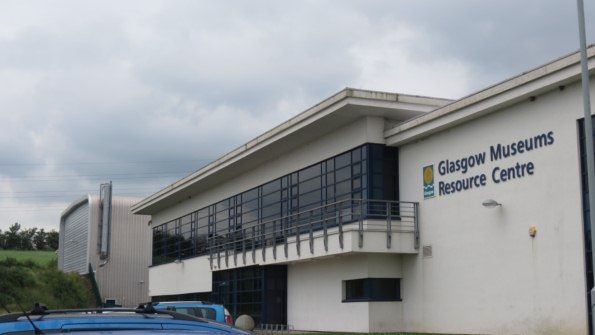
After my visit to the new Riverside Museum of Transport in Glasgow and the subsequent report in this magazine I was asked if I would like to see the reserve collection of ship models which is now housed in the Glasgow Museums Resource Centre, a brand new facility located south of the city close to the M77 motorway. Eight years ago Bill Clarke and myself visited the highly acclaimed Clyde Room collection of ship models in the old Kelvin Hall location of the Glasgow Transport Museum and also had an opportunity to have a brief look at what was then in the reserve store at that time.
This store was in a poor state and inadequate as a facility for maintaining the models in good condition, but that was then! Subsequently, the Transport Museum was to become the new Riverside Museum and as a result the new Glasgow Museums Resource Centre has been planned and built with the intention of making it accessible to the general public for research at specific times, whilst also enabling conservation of the museum’s models and artifacts. So a more open arrangement now prevails for the general public to see all the collections. The Glasgow Museums Resource Centre is an imposing modern building, accessible from Junction 3 from the M77. Access is free, but visiting arrangements and specific requests have to be made in advance.
Enjoy more Model Boats Magazine reading in the monthly magazine.
Click here to subscribe & save.
Storage?
This is a storage area and as such it is not just confined to ship models but a large number of other collections and artifacts. This means most of the areas within the building are accessible only when escorted. Each specialist area is climate controlled depending on the types and sensitivity of the artifacts.
Accessing the ship model collection requires transiting a maze of corridors and fire doors, but once you have arrived you are confronted with rows of storage racks housing the models. These racks are on rails that can be slid together, thus reducing unused ‘passage’ space, but can be opened out for access as required. However, some models such as the Empress of Russia, Viceroy of India and the RN dreadnought HMS Colossus are much too big to be stored on racks.
Photography
Generally you are free to photograph the ship models, however there may be some specific restrictions so it is a good idea to ask first. I cannot understand why some other museums with similar facilities impose a strict ‘No Photography’ rule for their collections, which is counter to the ethos of easy public access.
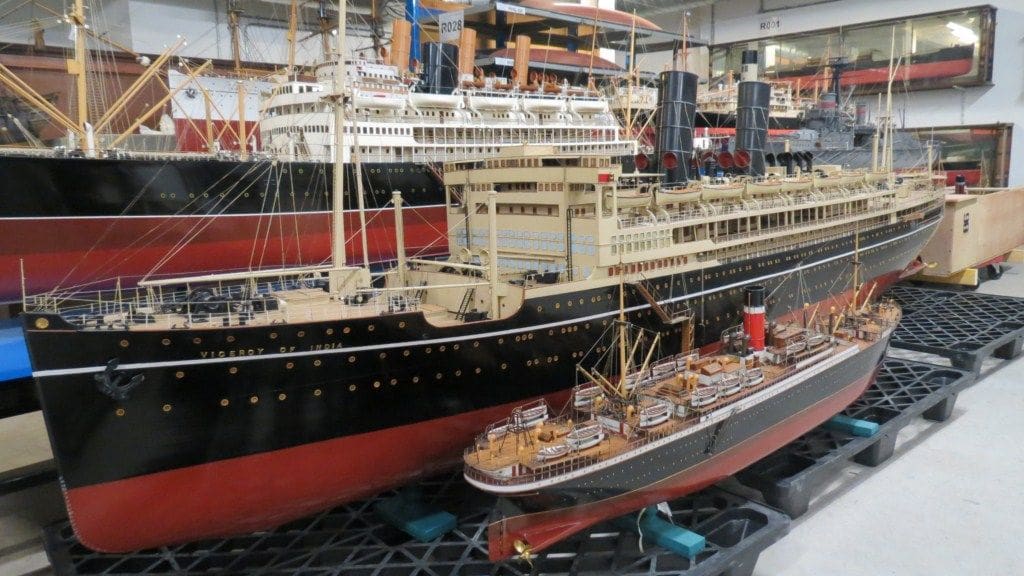
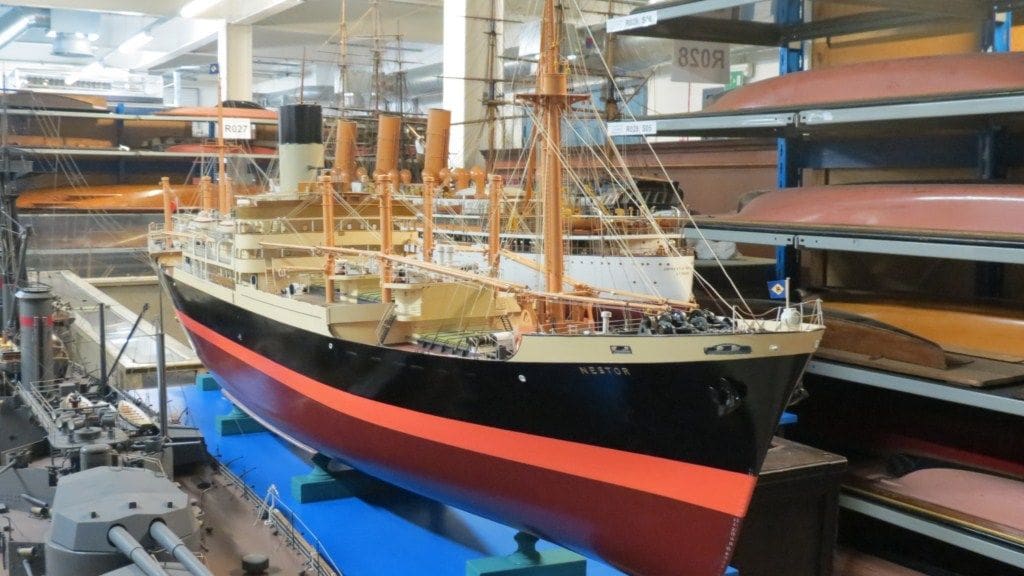
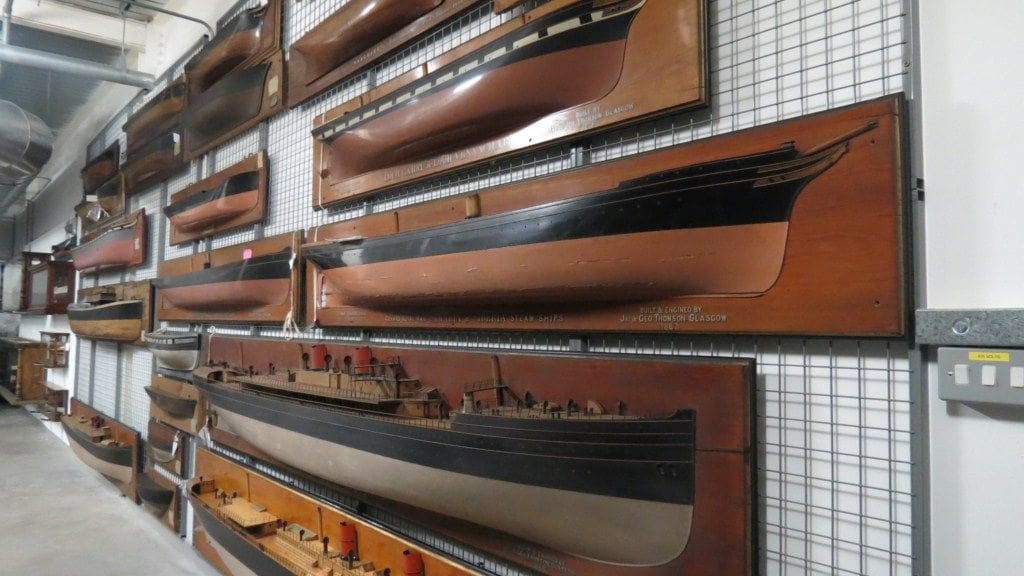
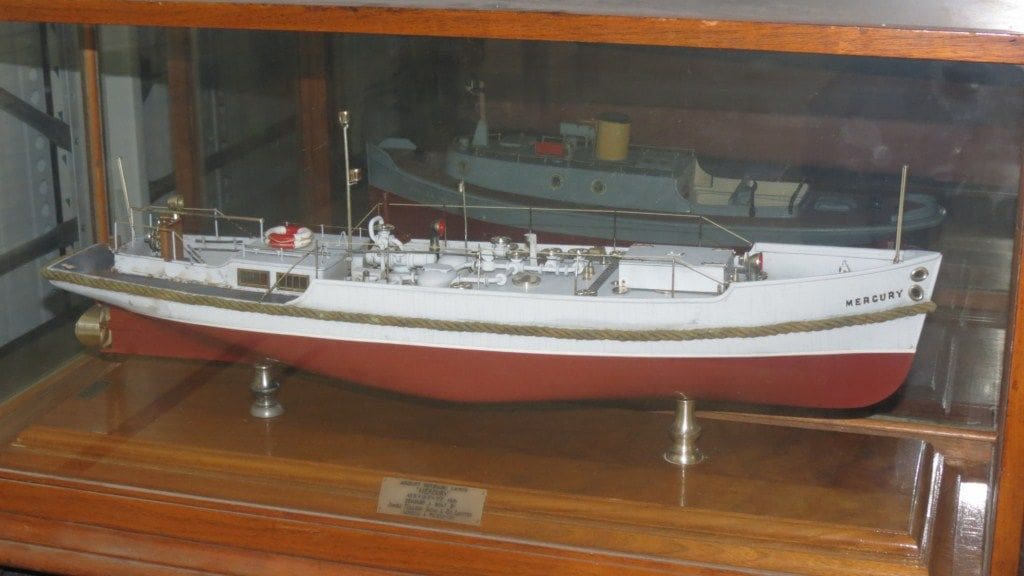
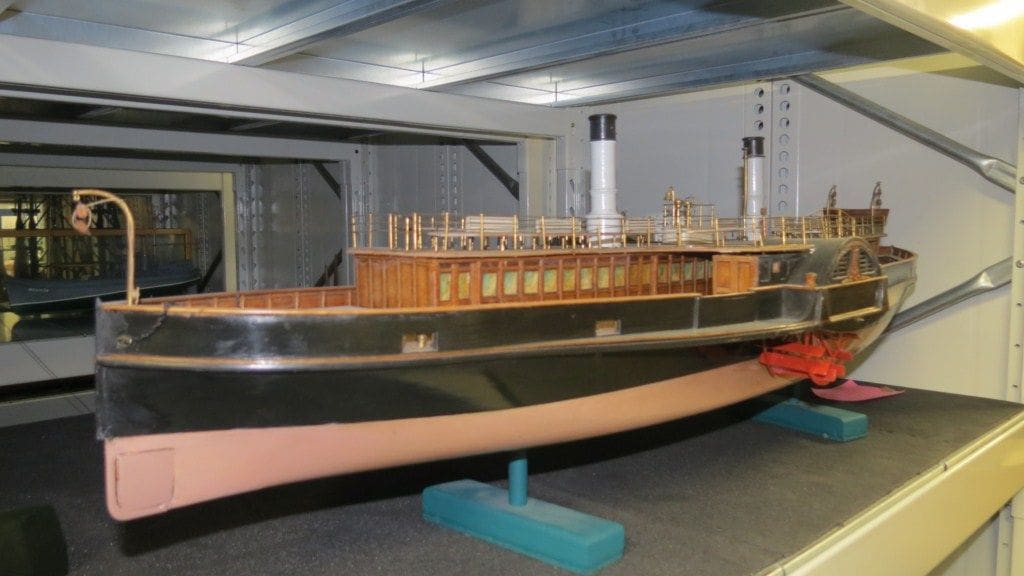
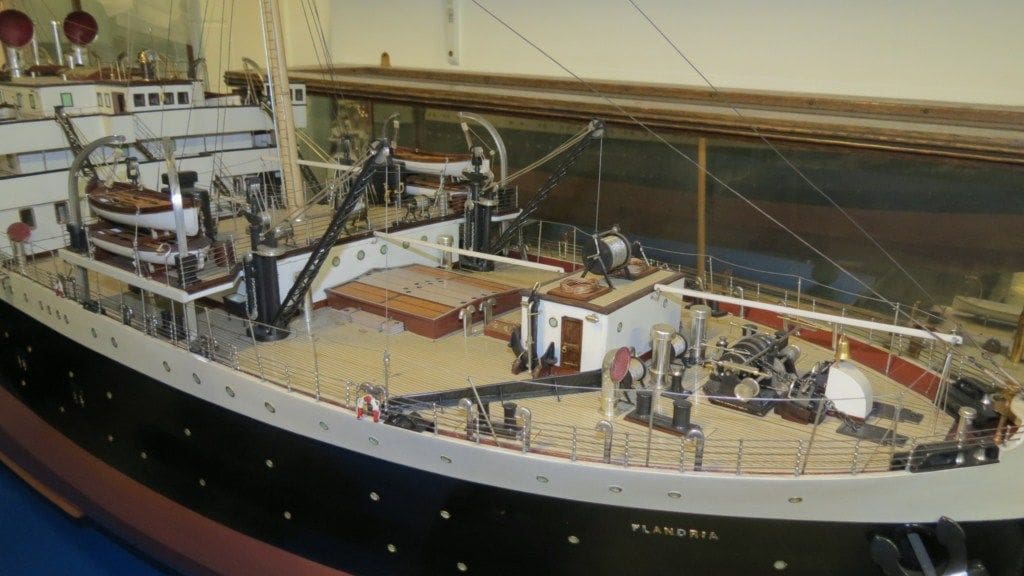
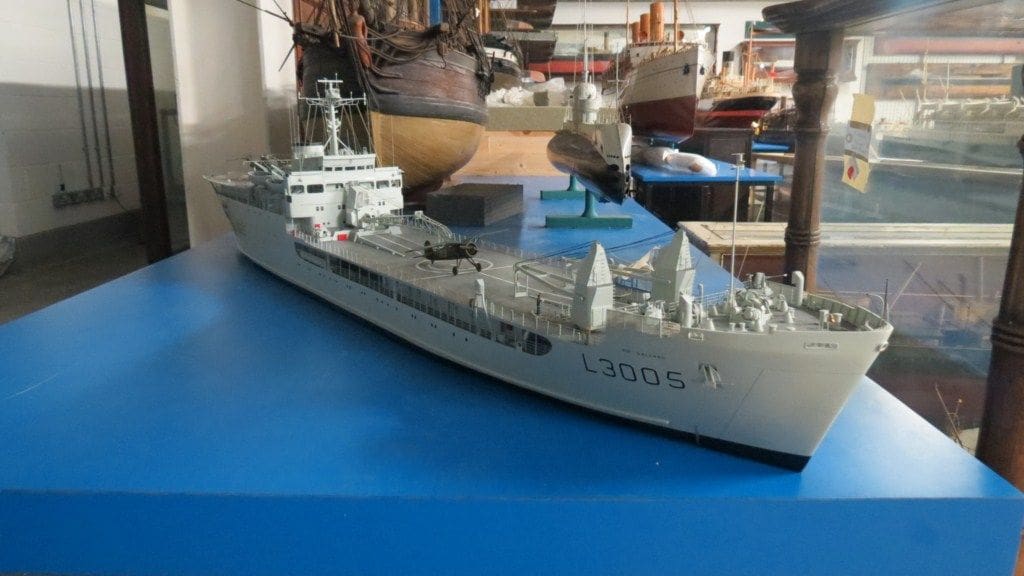
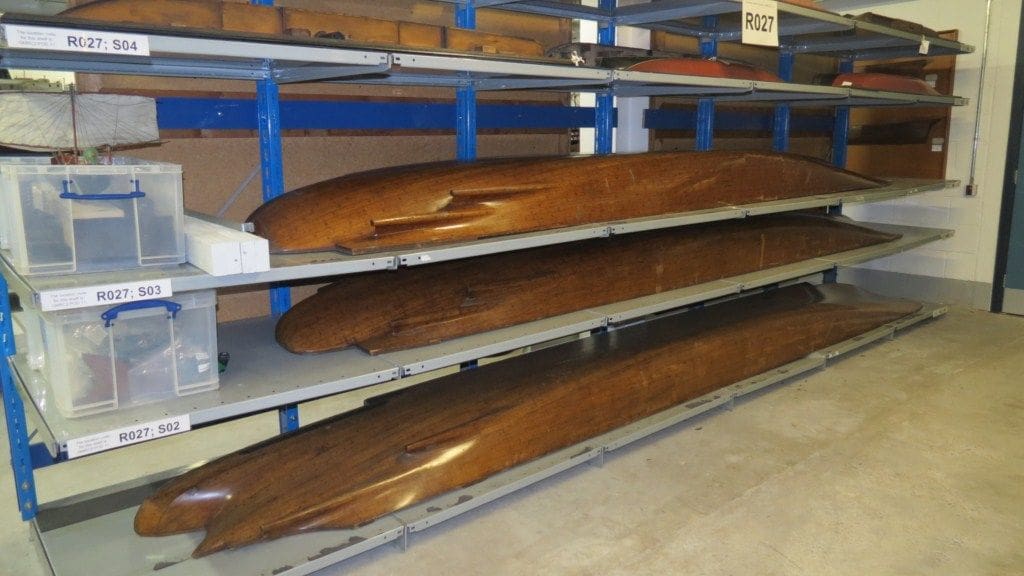
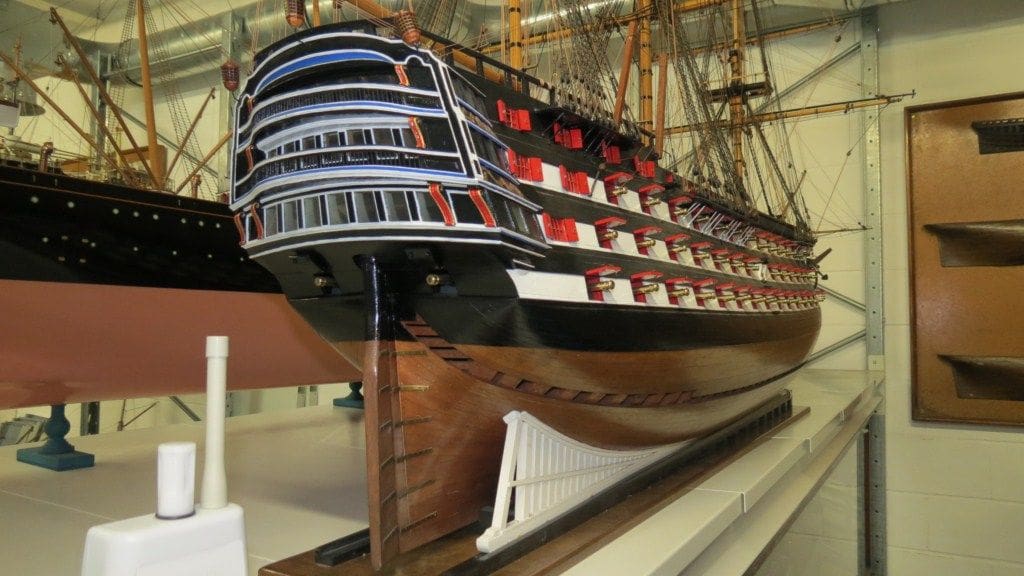
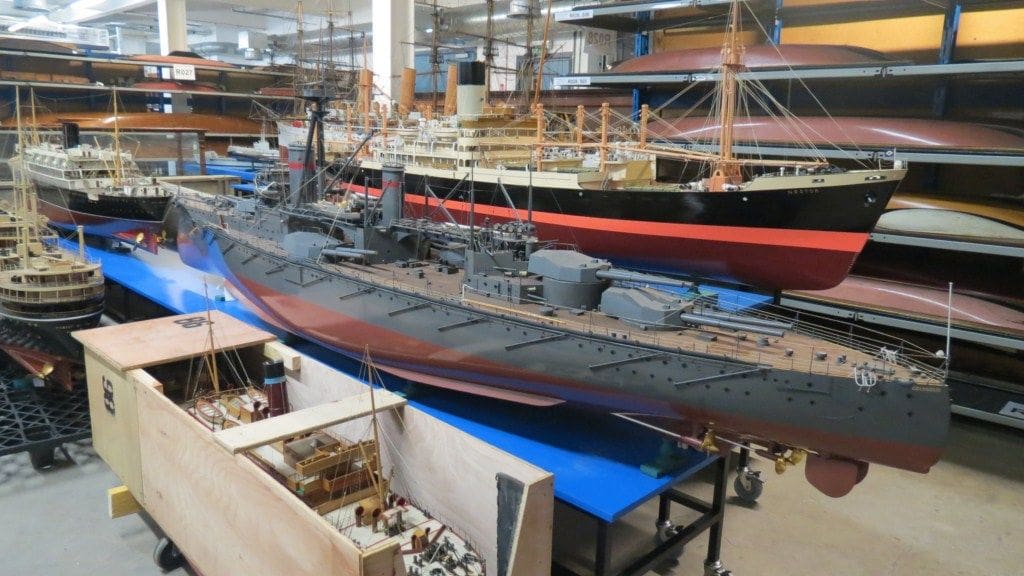
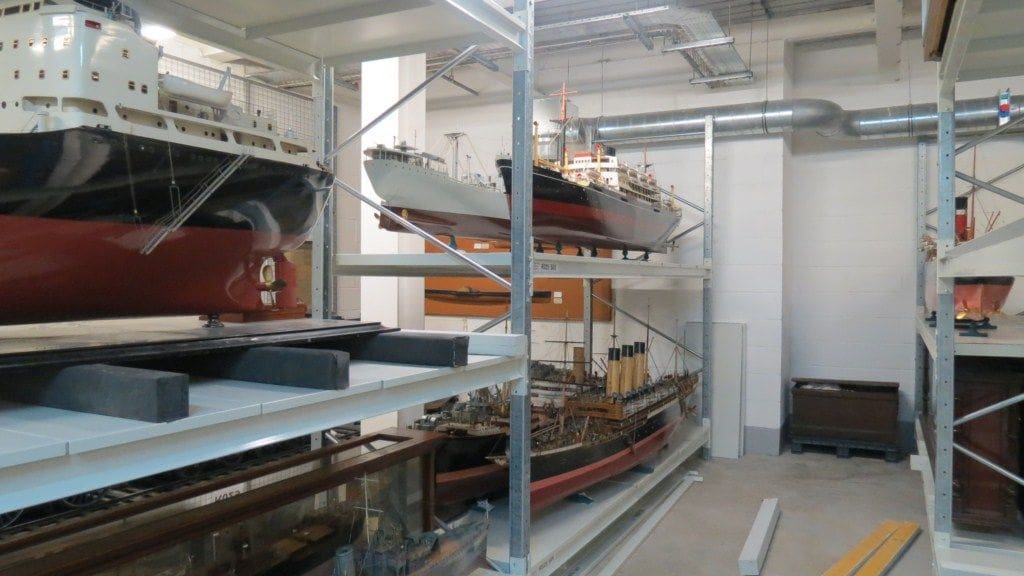
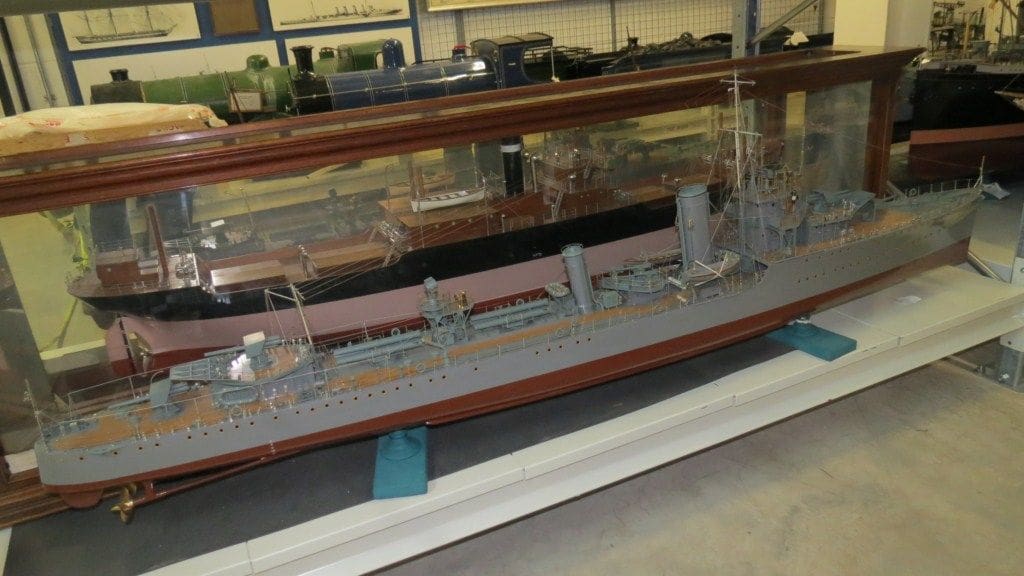
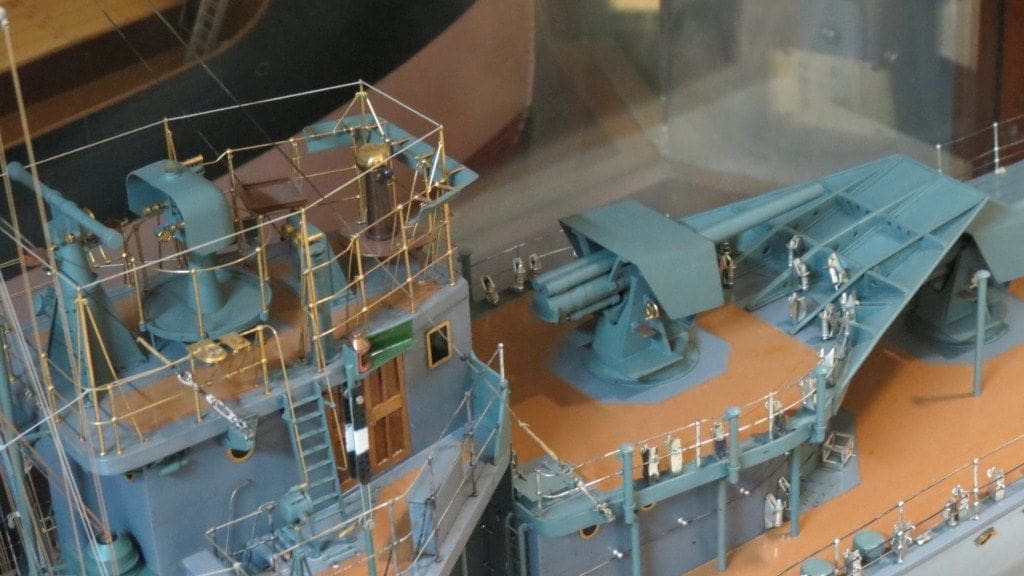
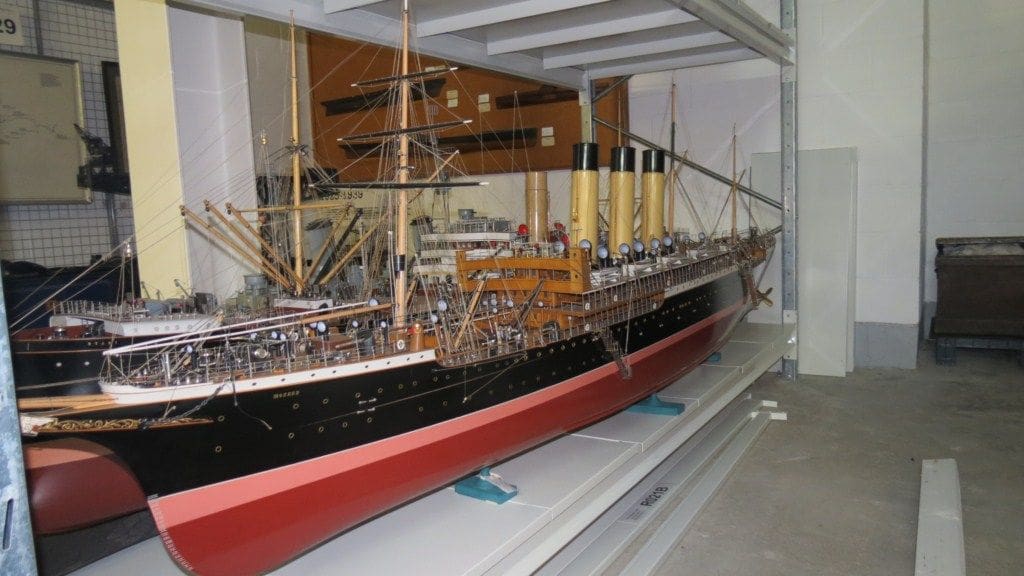
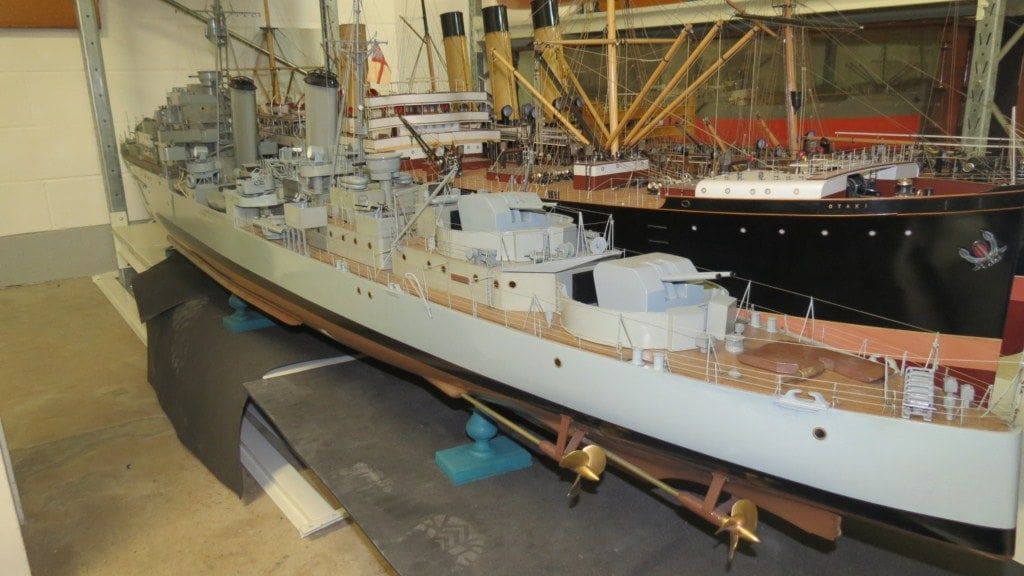
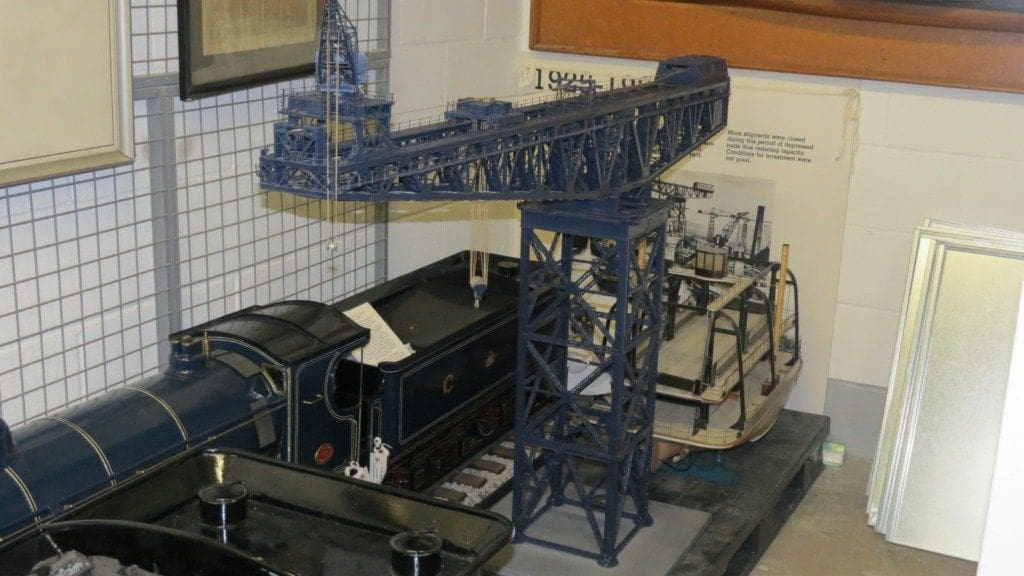
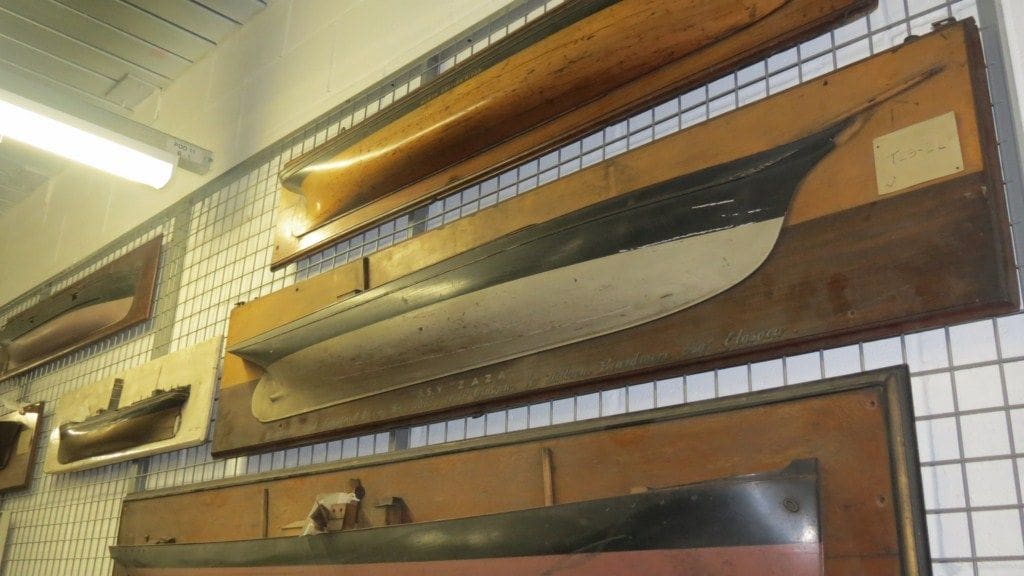
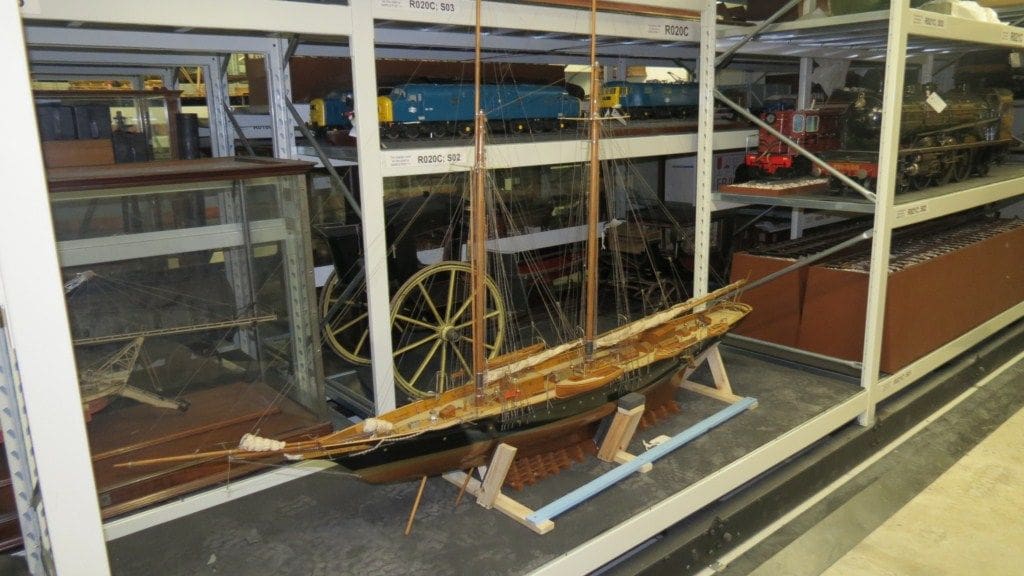
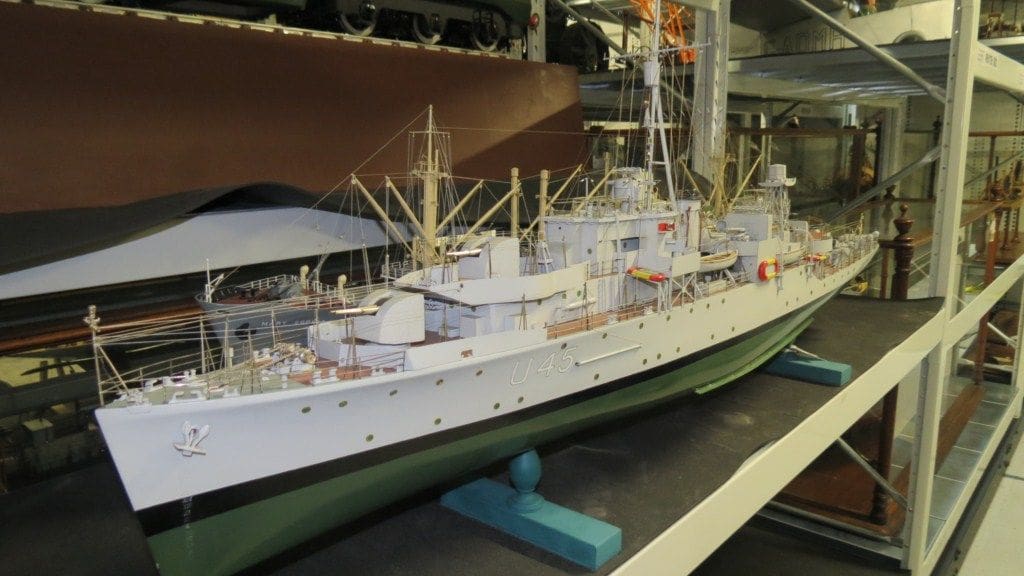
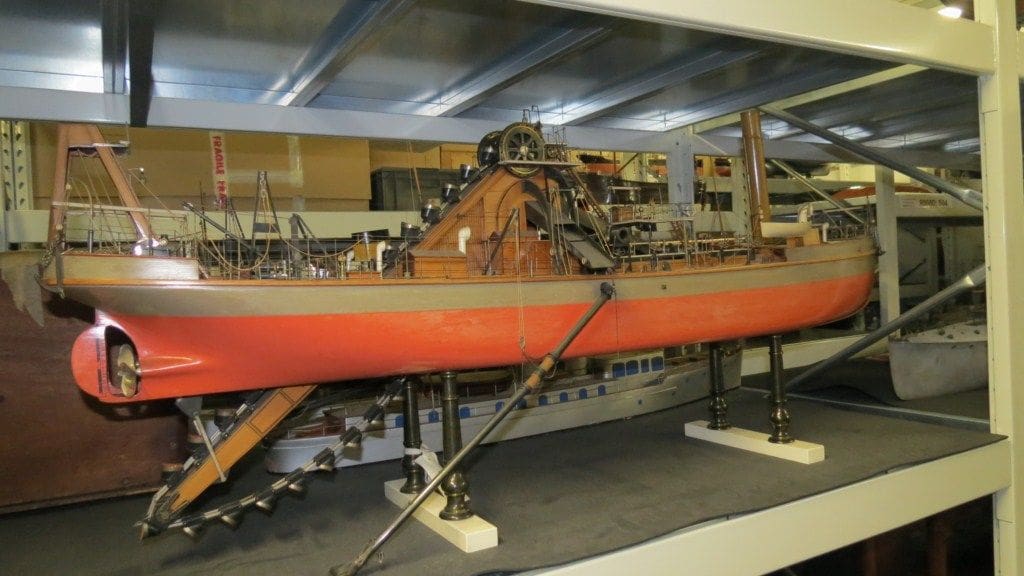
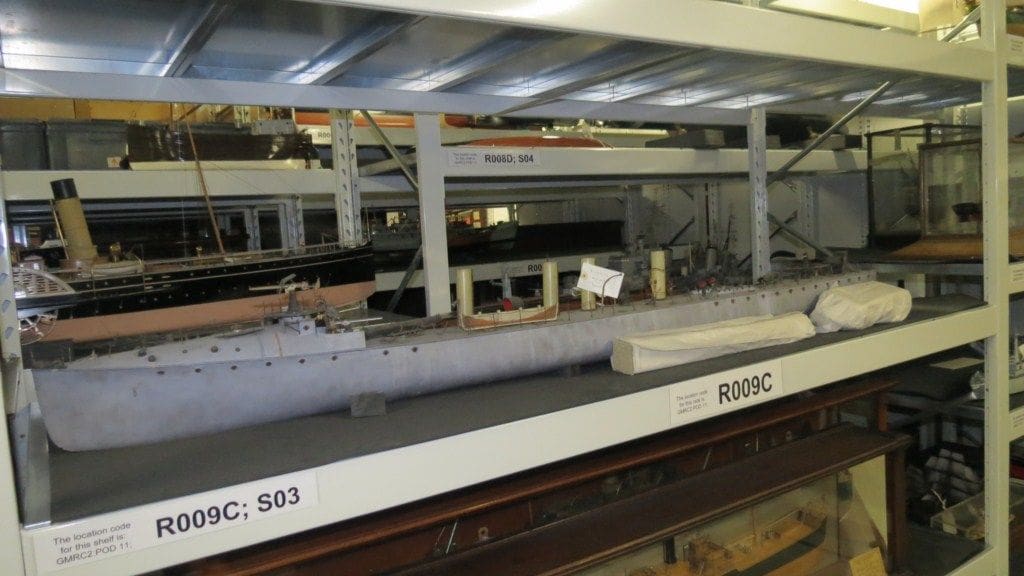
Half-Block Models
Many museums store and display these and their purpose was originally to illustrate the run of plates, their positions and the shape of vessels. In fact some of the earlier half-block models from around the mid-19th century were very basic and ornamental rather than the later versions, but they did give an more informative visual impression of the hull form. A number of those stored here have historical connections, including those of the RMS Queen Mary, Queen Elizabeth and Aquitania.
Warship models
One of the most imposing models is the 1:48 scale builder’s model of the dreadnought HMS Colossus with the original ship being completed in August 1911 by Scott’s of Greenock. The model currently requires some conservation work, but is in a remarkably good condition all things considered.
Enclosed in one of the humidity controlled racks is a model of the Black Swan class sloop HMS Wild Goose which I last saw displayed behind reinforced glass in the Clyde Room. She was part of Captain Walker’s Second Escort Group responsible for the destruction of many U-boats during the Battle of the Atlantic and it is worth remembering that 2013 will be the 70th anniversary of that campaign.
There are also models of the Dido class anti-aircraft cruiser HMS Scylla and the C class destroyer HMS Chivalrous, which I can’t recollect seeing previously.
When going to various model and trade exhibitions, I think that models exhibited in various stages of construction are amongst the most fascinating, simply because unlike completed models you can physically see much of their constructional detail. Models in reserve collections, especially those exhibiting signs of deterioration or damage often reveal parts of their construction. One such model is the Yarrow builder’s model of one of the first torpedo boat destroyers (TBD), HMS Hornet and known as bring one of the ’26 knotters’. At that time in the late 19th century/early 20th century, there was the so called ‘Battle of the Boilers’. HMS Havock, the first TBD, was fitted with locomotive boilers whilst HMS Hornet had water tube boilers. HMS Hornet won the day by being the faster ship, which in turn influenced boiler installations in later warship construction.
Commercial and sailing vessels
Apart from the Clyde built ships in store, there is an interesting and striking model of the Chatham built 120 gun first rate HMS Howe of 1815 which has recently undergone conservation.
Aside from the familiar models of well known vessels, it’s the more obscure but no less interesting that often beg to be viewed. For example, there were a number of dredgers that were really accessible and viewable without their glass cases and one such vessel is Karnafuli. This builder’s model complete with mechanical fittings represents the 810 ton topper sand dredger built by William Simons & Co. of Renfrew in 1906 and registered in Chittagong! The dredger was commissioned by the Indian Government to ensure the Karnafuli River remained navigable for shipping in an area now known as Bangladesh.
Another unusual model is that of the freight and passenger vessel Flandria. The original was built by Barclay Curle and Co. of Glasgow in 1922 for the Hollandsche Lloyd (Royal Holland Lloyd) line to operate between Amsterdam and South America. The wealth of detail is remarkable, much as embellishment, but none the less functionally correct.
One vessel I have not seen before in any model display or museum collection is the model of the aircraft refuelling launch Mercury that was originally built by James Pollock & Sons, but there is little or no information available as to its history. Given the name, I can (but perhaps incorrectly) assume that it had connections with flying boats or similar craft between WW1 and WW2, but this is only speculation. If anyone has any information on this model and the original craft, I would like to know more please.
Conclusion
Visiting museum ship model collections such as this are a privilege and an experience. A privilege particularly, because these models are usually built by unknown craftsman. The company that built the model may be recorded, but not the name or names of the model makers which in many ways reflects the situation that existed (and exists) for those who worked on the full-size vessels. If it wasn’t for the skill of these nameless craftsmen who made these models, then they would not be here for future generations to appreciate. And the experience? Well it is humbling when you consider that these models were built without the range of modern materials, glues, tools and paints.
Resource centres such as this one are not just custodians of history but also provide a service for current and future generations. Because of budgetary restraints it has been a real challenge for museums to keep their collections in suitable environments and maintain a high standard of conservation. A model from the 19th century (or whenever) is a 3D window into the past and a tangible link with how things were in ‘past times’. I would like very much to express my thanks to Emily Malcolm, the Curator of Transport and Technology, plus all the other staff for their help and assistance during my visit.
Key information
Glasgow Museums Resource Centre: 200 Woodhead Road, South Nitshill Industrial Estate, Glasgow, G53 7NN, tel: 0141 276 9300 or by email to: GMRCbookings@glasgowlife.org.uk
To get there is easy! By car, exit the M77 at Junction 3 and take the A727 to Nitshill.




